C.E. Flores's Blog, page 52
October 10, 2018
Getting Beautified in Mexico
There are some challenges to a modern woman’s beauty regime here in rural Mexico. First, there’s where to go to find the services you may be in need of. Then there’s the communication issue between hair stylist and person in need of beautifying. Then there are the different concepts of beauty to contend with. So here’s some information that might make it easier.
Getting your hair cut isn’t as simple as it appears. The last haircut I got, I came out looking like I’d escaped from a mental hospital by climbing through the sewers. It was that bad. My husband and son just looked at me and shook their heads. My hair has grown out since then, but well, I decided I needed to learn a few more vocabulary words (and find a different stylist) before I tried again.
[image error]So you get your hair cut at a peluquería(coming from the word peluca which means wig) or Estética. Estética unisex establishments cut both men’s and women’s hair. However, a barbería (from the word barba which means beard) is a barber shop and caters to men only. As facial hair becomes more the mode, you can also get beard and mustache trims at most barberías these days. They don’t pull teeth though.
[image error]You need to be very specific in what you ask for. Most men in our area have el corte escolar which is the required haircut for school and is like a crew cut. So every stylist knows how to do this cut, making it the default cut for boys and men. Girls and I’d say 70% of the women here have the parece yegua (looks like a mare) haircut. That’s what my husband calls the pulled back from the forehead into a long, long ponytail or braid style. Older women tend to go with a short bob cut, again, not necessarily the most attractive style, but very popular among those that wear aprons to the store in these parts.
[image error]If you have extremely fine hair, your stylist may not be familiar with how to best cut your hair. You’ll know for sure after your hair has been cut, which is perhaps not the best time to find that information out.
[image error]There are some strange hair beliefs as well. Girls who have long flowing hair but are anemic are sent for a much shorter haircut since all that hair is taking the nutrients from the body. Yep. And since everyone wants curly haired babies, those whose little girls are straight haired sometimes have their heads shaved so that it will grow back curly. Ok then.
[image error]
There are more beauty options in addition to haircuts available at the salón de belleza. You should be able to find manicura and pedicura services at this sort of establishment or you could go to the specialty stores which do Aplicacion De Uñas (fingernail application). A salón de belleza will also style your hair and apply makeup for big events like quinceañeras and weddings. One salón de belleza in our town offers botox as well.
[image error]If you are in need of hair removal, there are special places for that too. This one is called Depilación Frida, referring to Frida Kahlo who was indeed in need of a little upper lip and unibrow assistance. I’m not so sure that this location is ideal, however. It’s on a heavily trafficked road in front of a secondary school and there’s nothing but a curtain to keep you from flashing the passing pedestrians your nearly hairless lady parts.
If you’d like just your eyebrows done you can go to places that offer Delineación de Cejas. The optometrist where I bought my last pair of glasses offers this service I guess so that your eyebrows look nice with your glasses?
[image error]So now you want to add a little pick me up scent either console or celebrate your new look? Head to the Perfumería. If you can’t quite afford what they have to offer, try perfumes similares where you can get casi, casi (almost) the same perfume at a fraction of the cost.
[image error]So a trip to the joyeria isn’t in the budget? Try the Bisturia for costume jewelry. Cosméticos (cosmetics) are pretty limited where I live. You might try places that supply the salones de belleza for a selection.
[image error]
If you are in need of a little more pampering and the vibrating chairs at the shopping center aren’t enough, you can go to a sobador (literally a person who rubs or massager). Our area does offer a “spa” but I’m sure it’s not anything like you can get in the south of France.
[image error]How about some body art? Tattoos are done at places that offer tattoos. That one isn’t too hard to figure out. Sometimes the establishment also does body piercing. Although we live in a pretty conservative area, it’s not unheard of for regular men and women to have visible tattoos or a body piercing or two and all girl babies have their ears pierced before leaving the hospital. Of course the more adornment you have, the more suspicious looks you’ll get, and the more often you’ll be stopped by police for a frisk. Just saying. Maybe get those tats in a little less visible place and not across the bridge of your nose, eh?
Maybe this will helps take some of the angst out of your next beauty treatment.
October 8, 2018
How to find a Midwife in Mexico
[image error]
In Mexico, there are three types of midwives, depending on their educational background. There are about 15,000 traditional midwives, who are empirical in their knowledge. Their knowledge varies from midwife to midwife. They have knowledge of the herbs and cultural birth customs. Many have been trained by the government, and use medical techniques that are outdated. There are nurse midwives who have a more updated medical knowledge, however, have trained in a deficient system. Many do not have a lot of practice for home births. Then there are technical midwives who have trained in the midwifery model of care. They are respectful of traditional practices and updated in medical techniques. Many are still young and just graduating. Also, there are foreign midwives living in Mexico and fighting for homebirth and humanized births.
To choose a midwife it would be really wise to ask her a lot of detailed questions, on how long she has been working, where she trained, who her network of health providers are. In case of emergency what would happen. How many clients she has approximately a month
Midwives have supported women through centuries in many states. Only 2 presidents ago, the government launched a campaign to institutionalize all births and many midwives were affected by this marginalization. However, today the government is realizing that this has not reduced maternal mortality significantly or does it satisfy the women. There is a lot of obstetric violence in the hospitals and the government is reopening a dialogue on how to reinstate their work.
For more information contact Sabrina Speich at Movimiento Osa Mayor or Osa Mayor Mexico.
October 4, 2018
Movie Review–Una última y nos vamos
While I’m not a big fan of Mexican produced movies, I am an aficionado of mariachi music and this movie really made my day!
Una última y nos Vamos is about a mariachi conjunto, Tierras Rojas, from Jalisco that has been accepted as a finalist in the national Mariachi contest in Mexico City. They had applied for consideration every year for the past 20 years, so some members of the group are a bit long in the tooth and know it’s their last shot at glory. The grand prize is a sizable cash amount and the privilege of singing Las Mañanitas to La Virgen de Guadalupe at the Basilica on her name day, December 12, quite an honor.
The characters are flawed and the trip from the agave plantation to Mexico City is fraught with peril. At each seemingly insurmountable obstacle, I found myself rooting for their ultimate success just as much as the townsfolk. It’s hard not to love the underdog. Interestingly enough, one of the contest judges happened to be Jose Alfredo Jimenez Junior whose father inspired our family’s trip to Dolores Hidalgo, Guanajuato a few months ago.
There were all sorts of lovely wholely Mexican details, like the altar at the carniceria, metiche abuelitas, the barber who imbibes liberally from his flask making haircuts past noon hazardous to your health, the chocolate (illegally imported) van, the brawl at the quinceanera, and several phenomenal performances by mariachi.
So if you are looking for something that makes you shout VIVA MEXICO, this is the movie I recommend.[image error]
*****************
[image error]
October 2, 2018
Eateries in Mexico
I know you’ll find someplace delicious to eat with the money jingling around in your pocket in Mexico. Eateries abound. It helps to know what type of food each type of establishment specializes in, in order to satisfy that craving you have though.
[image error]
Breakfast is pretty thin fare in my area. The best you can do is head to a juguetería (juice shop) for some freshly pressed juice or licuados (milky concoctions). If you need a bit of umph to your morning, you can get a pajarete (milk and liquor drink). There are a few cafes now, nothing so fancy as Starbucks, but they don’t open as early as I like to have my breakfast. You can also stop by the panadería (bakery) and pick up some sweet breads and carton de leche (carton of milk).
[image error]
However, around 9, no matter what the season, it’s a good season for soup for breakfast. Yep, hot soup. Friday through Sunday you’ll see people carrying plastic handled buckets with foil which means they’ve gone and picked up their menudo or pozole for the morning.



During the week, the local birriería (place that serves birriria) is the place to be. Consomé (broth) with carne de chivo (goat meat in guajillo sauce) or montalay (vegetables, usually potatoes, carrots and peas, and ground meat bits in also in guajillo sauce) is one of our favorite morning delights.
[image error]
Around 10, you might be able to find some places that sell desayunos (breakfasts) or buffets (pronounced bu-fet) with servings of huevos rancheros.

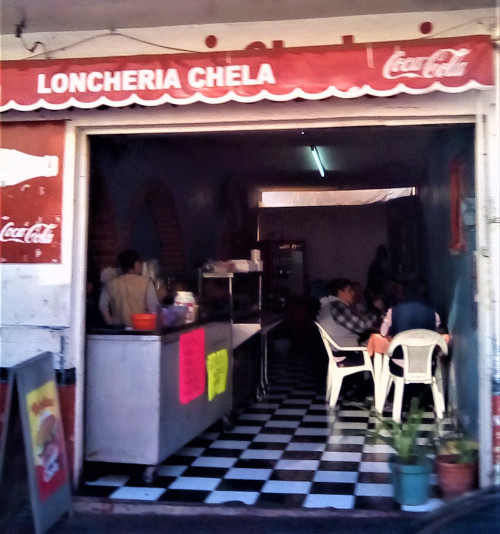

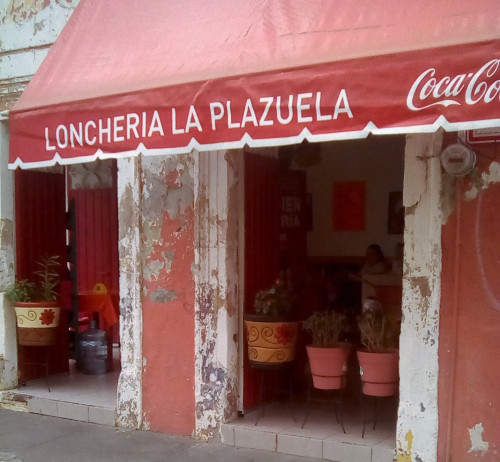
After 11, you can stop in at places that specialize in tortas (sandwiches made with bolillo) or huaraches (larger corn tortilla quesadillas about the size of your huaraches –shoe–hence the name). Loncherías or it’s Spanglish variant luncherías serve a variety of items. We even found a place that only serves tacos de canasta (basket tacos)–delicious!
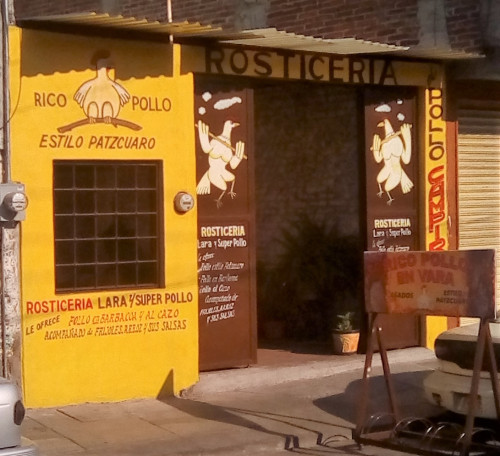
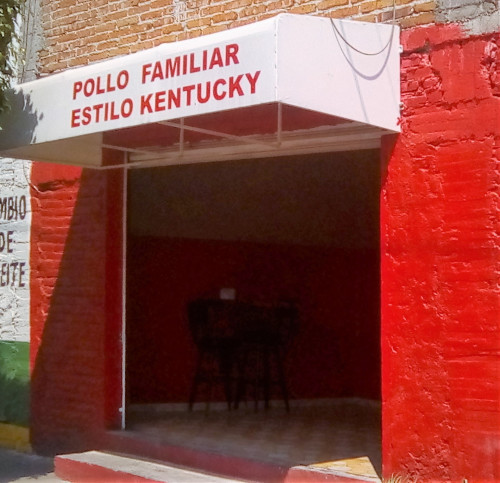
Rotiserías sell rotisserie chicken and the fixings often include rice, mole, some sort of bland pasta concoction and salsa. Fried chicken can be found at places that sell Pollo Familiar and come with pretty much the same fixings.
[image error]
The pizzería (pizza place) opens around 1. Don’t be surprised if your pizza comes with ketchup and hot sauce. Apparently it’s the way Mexicans enjoy their Italian pies.
A little later in the day and you can stop by places that sell comida corrida which is the Mexican version of fast food. It’s like a buffet setup with a daily set menu. You can order 2 or 3 guisados (servings)or a la carte to go.
Our town has both a Japanese and Chinese restaurant. The food offered isn’t what you might expect. It has a decidedly Mexican flavor. Spicy chili fried rice? No, thank you. However, as they are both run by people from those respective countries, if you know what to ask for, you can get a damn good authentic meal.
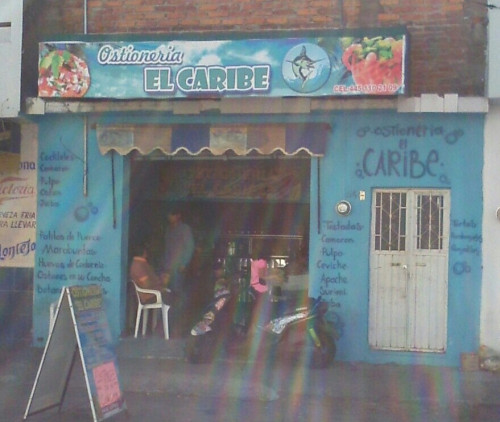
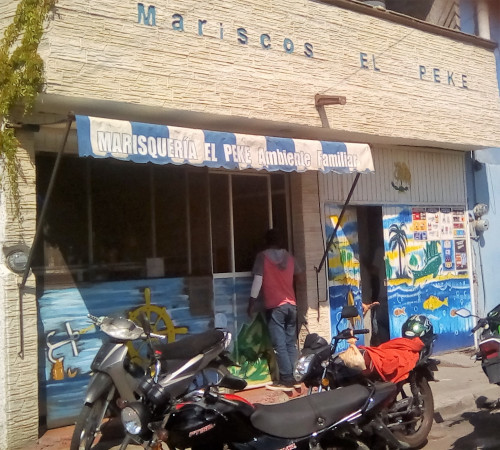

You’ll find some seafood dishes at the ostionería or un restaurante de mariscos or marisquería or even a coctelería. Try ceviche or coctel de camarón there. These establishments do brisk business during Lent when beef and pork are prohibited.
[image error]
Restaurantes familiares often have a play area for the kids, giving the parents a bit more time to enjoy their meals. Cenadurías are simillar to the loncherías but open later in the day.
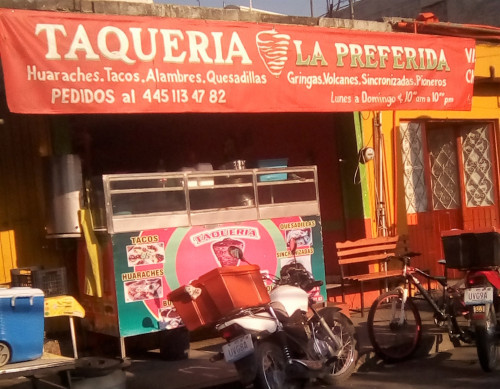
Taquerías also open late in the day. Don’t expect to get a taco before noon. Some open around 3 pm while our favorite taco guy doesn’t set up his stall until 7 at night. Tacos are served late into the night, but you need to get their sooner rather than later for tacos de tripa in my experience.
A kermés or quermés are those random side-of-the-road tent establishments that aren’t always there. Typically these spots are run by a few families that donate their proceeds for a cause, like one of the children needs a liver transplant or diasysis treatment. There is usually a sign indicating who will receive the proceeds, or there is supposed to be. These are not regular eating establishments and do not require a restaurant permit. They do have to present their cause to the presidencia (town hall) to get a permit to sell food for the day. The menus is whatever the volunteers cobble together.
On the other hand, there are regular roadside vendors which a variety of menu options. Some in shacks, some under lonas (tarps) and some with carts. Check with locals to see who offers the best food and best prices. We have enjoyed many a good meal perched on wobbly plastic chairs along the side of a dusty road.
Some eating establishments have a Servicio a domicilio (delivery service). Remember the tip rate in Mexico is 10% which is expected for this service. When in doubt on whether you should tip, ask a local. Quite often you can find a jar marked propinas (tips) near the register.
Eating out does have its risk. We’ve had mild food poisoning on a few occasions and not from those roadside stands, but established eateries. Allowing the Garcia effect to keep us safe, we no longer those items that have made us sick at any restaurant. Moctezuma’s revenge has never been an issue, however. Water is sold sealed in a bottle. Ice is made from ice vendors and isn’t any dirtier than the ice from soda dispensers found throughout the US.
[image error]
Should you wish something other than a meal, you can get ice cream from the nevería, popsicles from the paletería, or gaspachos from the gaspachería. Other vendors sell jugos (juices), cacahuates (peanuts), raspados (shaved flavored ice) garbanzos, elotes (corn ears) and esquites (corn in a cup). You can find mobile fruit vendors with tasty cups of in-season fruit, or mangos with chili powder on a stick, churros (fried dough in long bendy tubes covered in sugar), tamales, camotes (sweet potatoes), churros de maíz (long thin fried corn sticks served with tomatoes, cabbage, and hot sauce) and kettle fried potato chips served with limón, salt and hot sauce. All for just a few pesos. Who needs fast food when you can have freshly prepared delights every single day?
September 30, 2018
El Natalicio de Jose Maria Morelos–The Birthday of Jose Maria Morelos
September 30 is the birthday of José María Teclo Morelos Pérez y Pavón, yet another hero of the Mexican war for independence. He was born in Valladolid, Michoacan which was renamed Morelia in his honor as was the state of Morelos. In those areas, a bit of a hoopla goes on in honor of the birthday boy. Not so much in other areas.
[image error]
Miguel Hidalgo and Morelos
Morelos was a student at the school Colegio de San Nicolás Obispo where Miguel Hidalgo y Costilla was a teacher and became an ordained priest. He had three children with Brigida Almonte, two sons and a daughter. He sent his oldest son Juan Nepomuceno Almonte to the United States both for educational and safety reasons.
Under Morelos’s military leadership, the fight for independence progressed. He headed the National Constituent Congress of Chilpancingo in 1813 which drafted the “Sentimientos de la Nación” (Sentiments of the Nation) declaring Mexico’s independence from Spain. Congress offered the title Generalissimo (Your Highness) to Morelos but he declined and asked to be called el Siervo de la Nación (Servant of the Nation).
[image error] Morelos was captured by the Spanish in 1815 tried for treason, disloyalty to the crown, and transgressions in his personal life. He was found guilty and sentenced to death by firing squad on December 22.
[image error]
Morelos is found on the 50 peso note along with the state symbol, the Monarch butterfly. The reverse pictures the aqueduct in Morelia, the Bank of Mexico symbol and the prehispanic symbol for Michoacan. And yes, it is pink. Pink is an acceptable masculine color here in Mexico.
[image error]
September 26, 2018
Buying Building Materials in Mexico
We built our home from scratch. Fortunately, my husband is a builder by trade, with work experience on both sides of the border, and Mexican, which helped us negotiate the best deals. However, even with those advantages, there still was quite a learning curve for me on where to buy construction materials in Mexico.
[image error]Bricks come in two colors, red and gray and are manufactured in different ways depending on the color. Red, or brown, bricks are kilned in Yuriria, about 40 minutes from here. They are sent to different towns by the truckload. The tabiqueros can be found lounging around their trucks waiting for customers. Bricks are currently between 2.90 and 3 pesos per brick. An entire load of bricks, which usually is about 1600 bricks can be purchased slightly cheaper than the cost per individual brick. The tabiqueros will take the bricks to your construction site, unload and stack them. Try to keep count of the stacked bricks so that you can be sure you are getting each and every brick you paid for.
[image error]Gray bricks are used for foundations and can be bought directly from the manufacturer, ladrillera mecanizada. The bricks are pressed out 6 at a time. Cement blocks are made in the same manner. One thousand of these pressed bricks currently costs $3000 pesos. Patio tiles, paving bricks, sewer pipes and roofing tiles are often sold at these establishments as well.
[image error]Grava (gravel), arena (construction dirt), relleno (reddish dirt used for fill), tierra (dirt suitable for landscaping) can be bought all at one location, usually manned by a pre-pubescent boy with a backhoe. You can buy these materials by the truckload and have them delivered or you can take your own truck and have the kid load you up. You can buy a certain peso amount or certain scoop measurement. You can have this same boy and backhoe come to your construction site and dig holes or fill in dirt for a nominal price per hour.
[image error]Scalfolding can be rented at places that display “renta de adamios.” Wood used for framing is rented from places that advertise “se renta madera de construcción and charged a monthly rate. You can request tarimas (standard size rectangular pallets used to form poured cement)and vigas (posts) along with miscellaneous wood pieces often cut to the size and specification you need. These items are all treated with oil for waterproofing so you might want to have them delivered to avoid staining your clothes or getting a nasty infection from a splinter. Make sure to keep track of how many pieces you rented, what sizes and when the rent is due.

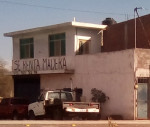
Wood for actual home use, like ply-board and 2x4s, is sold at the Maderería. Carpenters sometimes sell wood as well. In that case, the sign outside will read Carpintería y Maderería. Finished carpentry is alive and well here in Mexico mostly because everyone has built their own slightly crooked version of a castle and shelves, doors, and even tables must be made-to-order to fit. Prices are reasonable so there’s no reason why you shouldn’t hire a carpenter for your building projects.



Rebar, cement, cal (lime), mortero (mortar), nails, and other hardware type materials can be ordered from the Ferretería. Place your order at the counter. You can request to see different models of items or ask about the prices before buying. Things are most often sold by piece, by length or by weight rather than by the box/package. If your order is large enough, the Ferretería guys will bring it to your construction site free of charge. If you are doing a large cement project, like a roof, you can rent a mixer here.
[image error]If you are looking for screw, nails, bolts or nuts that are not your typical size, try the tornillería, that’s their specialty.
[image error]For plumbing, hire a plomero/electricista and get your supplies from el Plomería, or ferre-electrica store. Plumbing and electric are done differently here. Make sure your plumber/electrician is qualified. Often you’ll find those that are working here in Mexico were licensed in the U.S. before being deported. Hiring a plomero/electricista is one of the more costly parts of building but it pays to have it done right the first time. Boilas (hot water heaters) and stove fixtures are also installed by plomeros even though these are typically gas powered appliances.
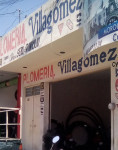
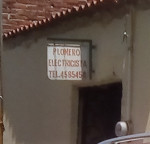

Windows and exterior doors and gates are made-to-order from a Herrería. He will come and take measurements, ask you about style design, make them, paint them, deliver them and install them for a set price. Don’t be put off by the appearance of a Herrería. It’s often shabby looking outside because the doors and windows are spray painted while leaning against the front of the house/business.
[image error]The glass part of windows and doors are made by the vidriería who will again come and do measurements, cut the glass to size, deliver and install them for a set price. There are options for your glass. Vidrio chino is a type of glass with designs on it or opaque. Vidrio claro is regular glass. Vidrio filtrasol has a thin layer of UV shading. Espejo is mirror glass.
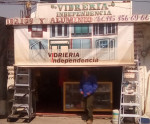
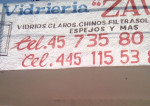
Locks, handles, and keys are made by the Cerrajería (locksmith). Broken chapas (locks) can also be fixed and spare keys made at the Cerrajería. If you lock yourself out or lose your motorcycle key, it’s possible the Cerrajería can help you out but it will cost more.
[image error]Láminas (corrugated tin sheeting) can be bought at the laminiería. but can also be found at most Ferreterías and even some Madererías. This is often used for roofing and comes in Láminas de Acero (steel sheets), Láminas de Policarbonato (Polycarbonate sheets), Láminas tipo Teja (teja roof tile style), Láminas de PVC (PVC sheets), and Láminas Acrílicas (Acrylic sheets).
[image error]Lighting fixtures and wiring are found at the Ferretería and ferre-electrica. Some electrical places are beginning to carry solar products as well, but most solar electricity items are found at their own little store.[image error] Tinacos (those large water storage containers on the roof) for some reason are often sold at places where you get tile. Look for tinacos and tile displays at stores that sell pisos y azulejos (floors and tiles). Mosaico (mosaic) is the older, thick tile style. You’ll most likely also find toilets, sinks, and bathtubs at these stores.
[image error]Both exterior and interior paint can be bought at places that sell pinturas. Try to at least buy the mid-priced paint. Cheaper paints are mostly water and you’ll need several coats of paint for it to look nice. Just so you know, if you hire a painter, expect him to thin even the wateriest paint with water before applying. That’s just how they do it here.
[image error]There you have it! Now you know where to go for your construction materials. So what’s your next project?
September 24, 2018
National Preparedness Month
Did you know September is National Preparedness Month? Now, you may know that I am denial about my Prepper tendencies. In fact, I’ve been known to poke fun at the bunker building types in the past. Today I’m going to confess a few things you may have already guessed if you’ve read my blog for any length of time.
I’ve watched 8 seasons of the Walking Dead and was thoroughly disappointed with season 8. Michone hardly had any action at all although Carol is still there battling both the dead and undead!
My favorite Game of Thrones character is Arya, because she’s a survivor. Her direwolf Nymeria is also AMAZING leading her own pack now that winter has come.
My favorite historical figure in Mexican history is Malinche. Although slandered with slurs of traitor and whore, the fact is she rose above her position as a slave and used her intelligence to survive the turbulent conquest years.
And I’ve written a Prepper book about Mexico (which is free for the next few days in honor of my coming out as a Prepper).
Just to feed my hysterical Prepper side a little bit more, I’ve been watching the award-winning 2014 series Years of Living Dangerously. Each episode is sort of the Hollywood version of the dangers of climate change (which existence the current U.S. president denies emphatically). Harrison Ford, Jessica Alba, Matt Damon, Don Cheadle, America Ferrera, Michael Hall, Arnold Schwarzenegger, Olivia Munn, Thomas Friedman, Ian Somerhalder, Lesley Stahl, Chris Hayes, M. Sanjayan and Mark Bittman are the commentators in the first season 9-episode documentary which was awarded an Emmy for outstanding nonfiction series–take that alternative fact Mr. President. World-renown journalists, not from Fox news, share the events, scientific causes and human toll of drought, hurricanes, global warming, deforestation and more. Let me tell you, each episode moves me just a little further on down the lane towards my secret Prepper alter-ego and bunker building inclinations.
It’s shameful to be an American these days. Not only do I adamantly oppose government-sponsored child abductions, but the fact that the United States is a knowing contributor towards global climate change and has gone so far as to repeal the several key environmental protection laws and encourage more fossil fuel exploitation makes me glad that I am living in exile.
Of course, I am well aware that what happens in the U.S. and other nations will ultimately affect my life and my child’s life and my grandchildren’s lives (when and if they make an appearance). My hope is that I will have Prepared enough and Prepared my son enough so that at least this branch of the Flores family won’t become extinct. To that end, I still have my eye on the lot next door. We need a larger garden if we expect to make it through the apocalypse and beyond.
So Happy Preparedness Month everyone! Although it might be more in line with the event to caution–Be Prepared! I encourage you to check out Years of Living Dangerously if you haven’t already and download my free book if Mexico is starting to seem like a better alternative to where you currently live.
**********
[image error]
September 21, 2018
Lil’ Pup no more
[image error]
Lil’ Pup made himself quite at home since he found us. Although his size, or rather the length of his legs, kept him from joining Puppy and me on our morning walks for a few weeks, he took up his role as companion puppy as soon as he was able. From then on, he and Puppy waited at the door for me to go on my rounds. Lil’ Pup took flank position and Puppy did reconnaissance, or what he imagined was reconnaissance while chasing butterflies, rabbits, and birds.
Everything Puppy did, Lil’ Pup copied, down to ear twitching. Although Puppy seemed to get exasperated with his new little buddy at times, he was mostly good-natured about his little yellow shadow.
[image error]
Since my husband and father-in-law started work on my sister-in-law’s house across the street, they allowed Lil’ Pup, Puppy and my father-in-law’s 3 dogs (a mama dog and her two pups) to hang out at the construction site. It’s just across the street, so you’d think that they’d be safe enough. Unfortunately, the neighbors up the road started up on their own construction project again about the same time. Puppy really, really doesn’t like them. Seriously. He goes completely ballistic when they drive past on their motorcycle. And with good reason. They make it their aim to hit Puppy with a big stick when he barks at them. Instead of discouraging Puppy from barking and chasing them, it infuriates him. In fact, they even slow down in front of our house looking for Puppy to come out and bark at them so they can hit him some more.
Puppy’s chasing and barking days finally caught up with him when they ran him over with their motorcycle. Puppy is much subdued and his injuries are healing.
Then, the neighbor who has backed up the sewage line with pig poop made another appearance. He’d been MIA for about a year and we’d gotten comfortable with him not being there. In fact, Kitty has taken to spending the afternoons in the shaded pig area.
We think it was he who poisoned our Lil’ Pup and my father-in-law’s puppy perhaps in an effort to get rid of Kitty. She’s fine, but both puppies died the same day. And boy, do we miss them. My father-in-law even declared that we were officially “en luto” (in mourning).


Puppy still walks with me in the mornings, despite his injuries. However, two black as night male dogs have taken up with the 3 yappy dogs at the corner, so our walk is sometimes fraught with danger. The Alpha black dog doesn’t want Puppy to walk down HIS street. Puppy has never been an alpha dog, he’s barely a beta dog and isn’t looking to fight, but to defend me he would. So we’ve tried skirting around the dogs even if that means trudging through the mud. Sometimes that works and we pass unmolested. Other times, Alpha dog becomes more aggressive. Fortunately, he considers me more Alpha than Puppy, so some stern shouting (sometimes in Spanish, other times in English) usually keep him from following us for long.
So what’s to be done about these infringements to our lives, liberties, and happiness by the neighbors in La Yacata? Nothing.
September 19, 2018
Doing the laundry in Mexico
I don’t mind doing laundry. Hands down, I prefer it to doing the dishes. However, with not having electricity at our house for so long, we’ve had to be proactive about doing laundry. I mean, we couldn’t just throw it in the machine and let it wash itself now, could we?
[image error]
Our pre-remodel second-floor laundry area, complete with hand pump connected to the ajibe (dry well).
Necessity meant we found alternatives. One alternative is hand washing. Almost every house in Mexico has a built-in washboard just for that purpose. The raised cement ridges are just the thing for scrubbing stubborn stains. When the washboard isn’t quite up to the job, a bristle brush can be used to attack those manchas (spots). Clothes receive one-on-one personal attention and come out cleaner than regular ol’ machine washing. The drawback is that it uses a LOT of water. First, you have to soak the clothes, then scrub with soap, then rinse the soap off. Although we have our gray water running into the garden, it still was a major expense.
[image error]
My husband and father-in-law doing the wash.
The next laundry option is to go to the arroyo (stream) and wash. Water is limitless and the washboards angled to get a good suds on. Washing was much quicker with all hands on deck. Again, though, there were some drawbacks. Wet laundry is HEAVY and in order for it to dry properly, we had to haul it back to our house and hoist it up to the second floor where the clotheslines were. Then of course, occasionally, there were the lookie-loos who laughed at our public chonie washing. But what can you do?
[image error]There are other options should you not wish to air your dirty laundry in public and don’t mind other people touching your unmentionables. The washerwoman still can eek out a living here in Mexico. Just look for signs that say “se lava ropa ajena” (foreign clothes washed here).
If you aren’t comfortable taking your wash to someone else’s home, you can have a cha-cha (muchacha) come in and do the washing for you. These girls often come from very small towns and take the bus every morning to their jobs, usually one or two days per week in each home. They take care of everything, the laundry, beating out carpets, general and deep cleaning, minding the children, cooking, even dog grooming, so that the lady of the house is free to devote her time to other things. Pay is dependant on the number of hours and a chore list and can be quite affordable.
[image error]There are also lavanderías, but not the laundromats that you may be used to with quarter slots and TVs and dryers. These laundromats are drop-off service. They have one or two machines in the back and will wash and dry your clothes for pick up. This is a good option for blankets and comforters which are nearly impossible to wrangle clean in the arroyo (stream). Some lavanderías offer ironing services and small clothing repairs, like sewing on buttons or patching garments.
[image error]
Another option for those special care items is the tintorería (dry-cleaners). Our local dry-cleaner even offers a pick-up/drop-off service.
[image error]
Knowing the pros and cons of hand washing, it’s more and more common for the lady of the house to request a lavadora for Mother’s Day. There are several options available. The most popular is the chaca-chaca machine. It’s a round drum that agitates the clothes clean and makes a chaca-chaca sound. On either side of the spectrum is the mini-washer which holds a maximum of 2 pairs of pants but would work well for undergarments and baby clothes and the modern washer with all the bells and whistles.
[image error]
I opted for the later and have been blissfully using it at the Little House in Sunflower Valley for over a year now. We made an attempt to move it to La Yacata after we got the 3000 power inverter but unfortunately it didn’t work. It seems our power inverter uses a modified sine wave rather than pure sine wave and the washer wasn’t happy with the power output. So for the moment, it remains washing merrily in Sunflower Valley.
[image error]
No electricity = no dryer
As for drying options, dryers are quite rare, so sun-drying is the most popular option. Lines are usually made of a special wire that doesn’t rust instead of clothesline, although I have seen plastic clotheslines for sale. Make sure your line is sturdy and anchored well. It’s not fun when your freshly laundered clothing falls into a mud puddle on the ground. In the event that you don’t have a line, fences and cactus will hold your clothes nicely. Remember to turn your clothes inside out so as to minimize sun bleaching. And make sure the clothespin is clipped securely. Flying underwear has been known to cause a death or two (Motorizado se accidenta por calzón volador en La Ceiba).
[image error]
A local laundry mat, although not the one we use.
Now that you armed with this laundry knowledge, I give you the domestic goddess blessing “Go Forth and Clean!”
September 16, 2018
A little about the Mexican National Anthem
The lengthy tribute to war that is the Mexican national anthem was written in 1853 by Francisco González Bocanegra as an entry to a presidential anthem competition sponsored by Antonio López de Santa Anna. The story goes that Francisco wasn’t interested in entering the competition but his fiancée, Guadalupe González del Pino thought otherwise. Guadalupe lured Francisco to an empty bedroom in her parents’ house and locked him in. She refused to open the door until he wrote something for the competition. Four hours later, he slid the behemoth poem that was to become the national anthem under his door and Guadalupe set him free.
The first musical accompaniment to the lyrics was rejected, so a second competition was held. Jaime Nunó’s entry, titled “God and Freedom” (Dios y Libertad), was chosen on August 12, 1854.
Since the full 10 stanza anthem is mighty long, President Manuel Ávila Camacho decreed that the official national anthem would be comprised of the chorus and 1st, 5th, 6th, and 10th stanzas in 1943.
Mexico takes its national anthem quite seriously. In the Law on the National Arms, Flag, and Anthem (Ley Sobre el Escudo, la Bandera y el Himno Nacionales) it is written that any interpretation of the anthem must be performed in a respectful way, that it may not be altered in any way, nor can it be used for commercial or promotional purposes. Permission must be obtained for all reproductions of the national anthems. The anthem must be played at the sign-on and sign-off for all radio and television programming (usually at midnight and 6 am) and that a photo of the Mexican flag must be displayed when the anthem is played on television. If a choir is singing the anthem, then there is no musical accompaniment. Spectators present during the playing of the anthem must stand at attention and remove head coverings. The national anthem must be taught to all children attending preschool, primary and secondary schools. If the anthem is played outside of Mexico, the Secretary of External Relations (Secretaría de Relaciones Exteriores) must grant permission and verify that the anthem is not used for commercial purposes. If the national anthem is performed incorrectly or disrespectfully, the Mexican government has levied fines in the past.
Not everyone in Mexico speaks Spanish. Thus, in 2005, the Mexican government allowed the National Institute of Indigenous Languages (Instituto Nacional de Lenguas Indígenas) to begin translating the national anthem into indigenous languages. So far, it has been translated into the Chinanteco, Hña Hñu, Mixteco, Maya, Nahuatl and Tenek languages.
Lest you think you’ll never need to know the national anthem, up until recently, reciting sections of the national anthem was part of the Mexican citizenship test. In January 2018, the process and test changed and no one is quite sure about the test process or the questions that will be asked but you can bet your bottom dollar that there still will be questions about the national anthem.
[image error]
[image error]



